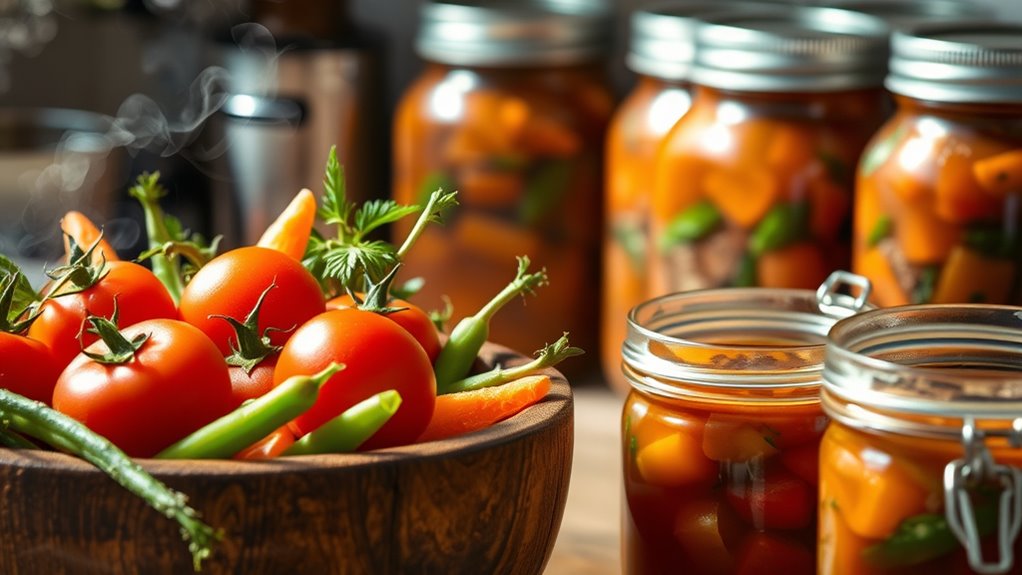This vegetable beef soup for canning uses lean beef, diced carrots and celery, onions, and tomatoes simmered into a rich, tomatoy broth. You’ll brown the beef in batches, then sauté aromatics, add vegetables, and cover with broth to a steady simmer. Pack hot jars with the hot soup, seal, and process in a canner for safe preservation. You’ll learn precise timing, prep tips, and safety steps as you continue, guiding you toward confident, flavorful results.
Ingredients and Quantity
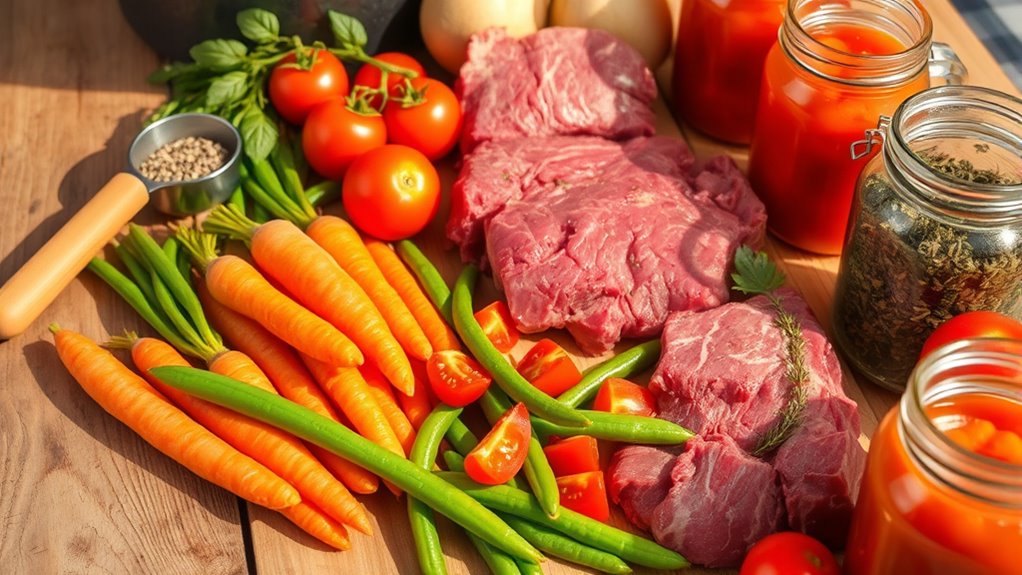
For this Vegetable Beef Soup recipe, you’ll need a balanced mix of vegetables, beef, and seasonings to create a hearty base. You’ll focus on vegetable selection and beef cuts to guarantee flavor and texture shine in every bite.
| Item | Notes |
|---|---|
| Carrots | Diced, fresh for sweetness |
| Celery | Sliced, crisp texture |
| Onions | Chopped, sautéed depth |
| Tomatoes | Diced, splash of acidity |
| Beef cuts | Stewing or chuck, pull-apart tenderness |
Choose cabbage or potatoes to finish, depending on your batch. Seasonal greens can replace or join items. Salt, pepper, and a bay leaf balance the mix, plus a bit of garlic for aroma. You’ll taste freedom in every simmer, as you honor simple, honest ingredients.
Preparations
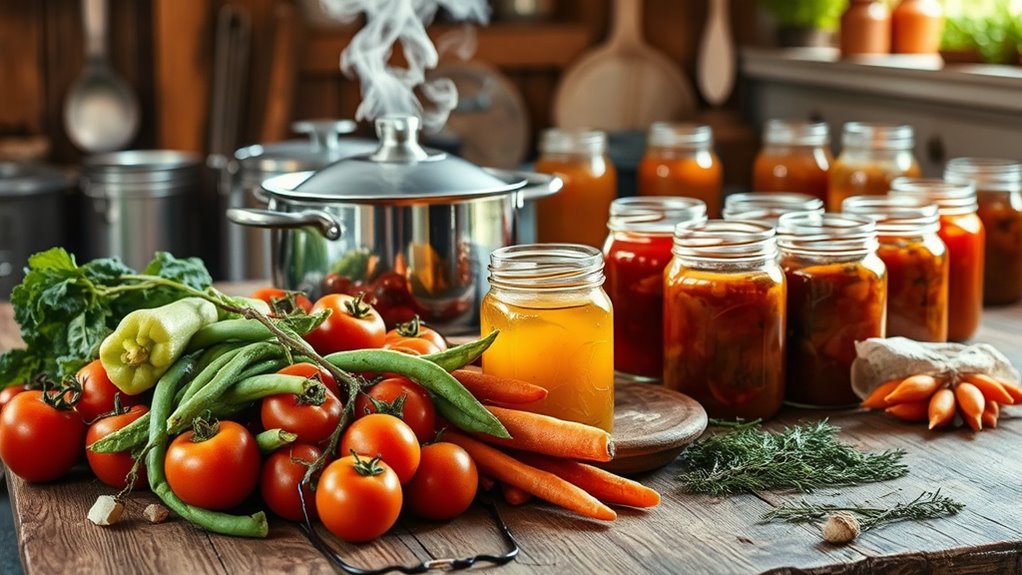
To prep this Vegetable Beef Soup, start by getting your ingredients organized and ready. You’ll tackle preparations with purpose, noting how each element supports safe, flavorful canning. Begin with vegetable selection: choose firm, blemish-free pieces, trimmed to uniform sizes for even cooking. Keep onions, carrots, celery, and potatoes crisp yet tender, and select tomatoes that are bright and smell fresh. For beef preparation, use lean cuts, trim excess fat, and cut into uniform cubes so they heat evenly. Rinse produce as needed and pat dry to prevent excess moisture. Pre-measure seasonings so you’re not scrambling later. Check your broth or stock for salt levels, aiming for balance. Label containers clearly, noting date and batch content to guarantee orderly, confident preservation.
Kitchen tools or Kitchenware Required
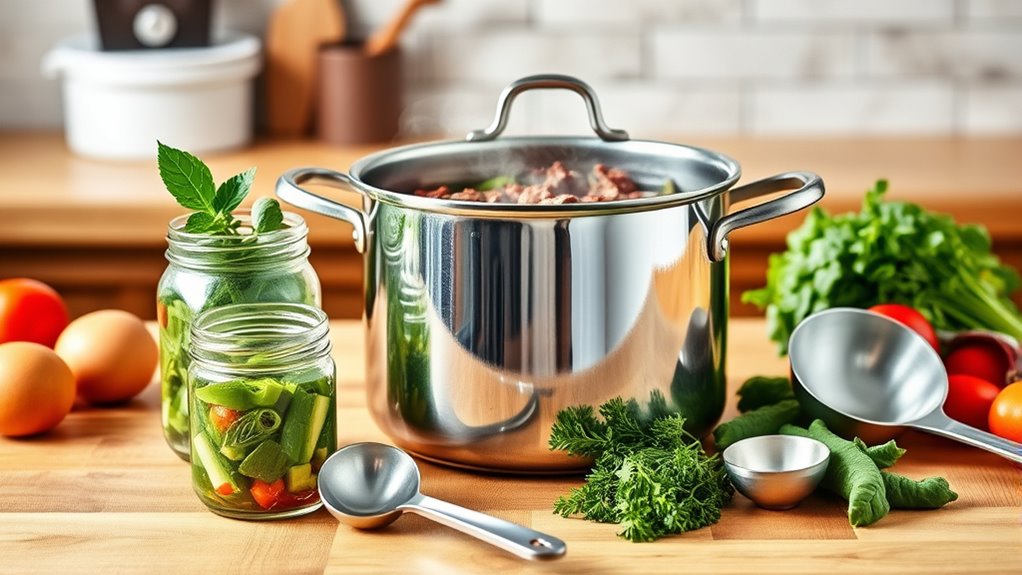
Choosing the right kitchen tools makes making Vegetable Beef Soup smoother and faster: a sturdy pot or Dutch oven, a sharp knife, and a cutting board are essential, while a ladle, slotted spoon, and tongs help with handling ingredients as they simmer.
Table:
| Tool | Purpose |
|---|---|
| Canner pot | Large capacity for processing jars |
| Jar lifter | Safe, precise handling of hot jars |
| Kitchen towels | Protects hands and seals |
In addition to canning supplies, you’ll want basic kitchen essentials like a thermometer and timer. These tools anchor your workflow, keeping heat steady and flavors balanced. You’ll appreciate the clarity they bring as you prep vegetables and beef, align jars, and monitor processing. Freedom comes from reliable gear that respects safety, efficiency, and your pace.
How to Cook
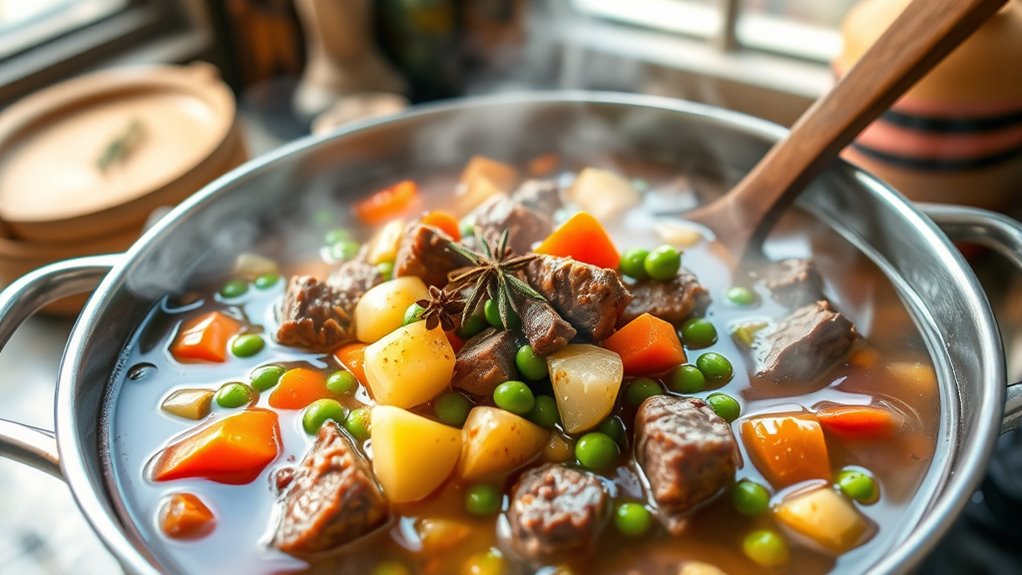
- Brown beef in batches to release rich aroma and sear juices, deepening the taste.
- Add onions, garlic, and a pinch of salt; sauté until fragrant and translucent.
- Stir in chopped vegetables, tomatoes, and broth.
- Bring the mixture to a steady simmer.
- Deglaze the pan with a splash of water or stock to lift browned bits and maximize flavor before adding liquids.
- Maintain a quiet simmer to develop tenderness and clarity.
- Allow carrots and potatoes to release their natural sweetness.
- Finish with herbs, pepper, and a dash of soy or Worcestershire sauce if desired.
- Pressure can the soup safely for storage.
How to Serve
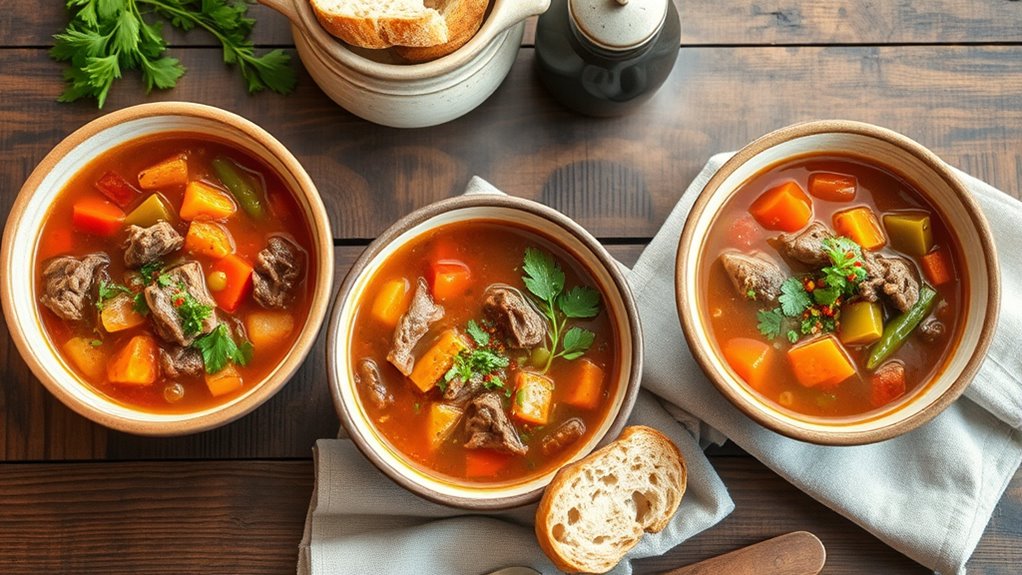
Fresh bowls of vegetable beef soup deserve a thoughtful presentation: ladle the steaming soup into warmed bowls, ensuring each serves a generous portion of tender meat and vivid vegetables. You set the scene with a clean, simple garnish and a bright aroma that invites seconds. For serving suggestions, offer crusty bread or warm cornbread on the side, plus a light drizzle of olive oil or a squeeze of lemon to brighten flavors. Keep portions moderate, so everyone can enjoy a balanced feast without waste. Garnishing options include chopped parsley, a few peppery chives, or a small dusting of paprika for color. Present promptly, and invite guests to customize each bowl, preserving the soup’s hearty, freeing, homey character.
Tips
To simplify weeknight cooking, prepare a mise en place: have all vegetables chopped, beef trimmed, and broth at a gentle simmer before you start. In this section, you’ll refine your process with practical tips that save time and preserve flavor. Use consistent canning techniques: portions labeled, jars clean, heads of garlic optional, and salt measured to taste. Choose vegetable choices that hold up under heat and long shelf life, like carrots, potatoes, green beans, and corn. Keep peppers and leafy greens for later additions to avoid mushiness. Streamline simmer times by skimming foam, adjusting heat to maintain a steady bubble, and tasting tang subtly with tomato or herb notes. Trust your instincts; precision earns reliable, flavorful results.
Food Value and Benefit
A well-made pot of vegetable beef soup is a nutrient-dense dish that offers a variety of essential vitamins and minerals along with numerous health benefits.
Food Value:
- Lean beef: High-quality protein, iron, zinc, and vitamin B12
- Vegetables (such as carrots, celery, onions, and tomatoes): Rich in dietary fiber, vitamins A, C, K, and folate, as well as potassium and antioxidants
- Broth: Provides hydration and electrolytes like sodium and potassium
Benefits of Eating This Recipe:
- Supports muscle growth and repair due to high-quality protein from lean beef
- Enhances immune function with vitamins A, C, and zinc
- Promotes healthy digestion with dietary fiber from vegetables
- Helps maintain healthy blood circulation and energy levels through iron content
- Contributes to hydration and electrolyte balance via broth minerals
- Supports overall wellbeing by delivering antioxidants and essential nutrients for sustained energy and improved focus
This wholesome soup combines balanced nutrition and comforting flavors, making it an excellent choice for a nourishing meal.
Frequently Asked Questions
Can I Substitute Frozen Vegetables for Fresh in Canning?
Yes, you can substitute frozen vegetables for fresh in canning, but consider frozen vegetable quality and texture. Guarantee canning vegetable safety by following tested guidelines, blanching properly, and adjusting processing times to account for frozen produce.
How Long Will Canned Soup Last After Opening?
Canned soup, once opened, lasts about 3 to 4 days in the fridge. For best flavor, seal tightly and label with date. Regarding canned soup storage, follow guidelines and trust your senses for shelf life.
Is Pressure Canning Required for Safety With Beef?
Is pressure canning required for safety with beef? Yes—pressure canning is crucial for beef safety. You should use it to prevent botulism and guarantee safe shelf stability, especially for low-acid soups like vegetable beef combinations.
Can I Double the Recipe for Larger Batches?
Yes, you can double the recipe for larger batches, but plan batch sizes carefully and adjust processing times accordingly. When scaling, focus on even simmering, accurate measurements, and safe recipe adjustments to maintain quality and safety.
Do I Need to Add Salt or Sugar for Canning Safety?
Yes, you don’t need salt for safety, and sugar isn’t required; but you can use salt alternatives or sugar substitutes if desired for flavor. Don’t overthink it—follow tested guidelines, and trust proven canning safety.
